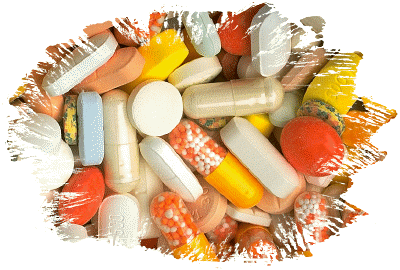
| Beating Breast Cancer |

| HealingWithNutrition.com 1-800-943-1123 | Home | SiteMap | Education | Products |
 |
|  |
|
It doesn't kill as many people as heart disease, but breast cancer is still a serious threat to women (and to some men). In 1999, about 176,300 new cases of breast cancer were likely to be diagnosed in the U.S. (1,300 of these amoung men). A report from the National Cancer Institute (NCI) estimates that about one in eight women in the United States (approximately 12.6 percent) will develop breast cancer during her lifetime, and one of every 28 women has a risk of dying from it. Hispanic women have a faster rising breast cancer rate than other women, and American Indian and Alaskan Native women have higher incidence and lower survival rates thatn many other groups. As Asian and Pacific Islander women become Westernized, their risk goes up and Ashkanazi Jewish women have a higher incidence of gene mutations that increase risk. African American women are more likely than others to die from the disease. Also, risk increases with age. Hormone replacement therapy, too, has been linked to a slight increase in breast cancer risk (though it has benefits as well for many women). Fortuanately, greater use of mammograms helps detect cancer early and the five-year relative survival rate is rising. Of course, prevention is the best defense. Living healthfully - eating a diet high in plant-based foods, avoiding tobacco, limiting alcohol consumption and exercising, among other good habits - is crucial to staving off this killer. Supplements also play a role in preventing - and even stopping the progression of - breast cancer, and increased chemoprevention research is turning up some promising results. What Is Breast Cancer Environmental exposure to chemicals that are similar in structure to estrogen (xenoestrogens), and therby recognized by the body as estrogen, or high levels of circulating estrogen, can lead to this predicament. However not all compounds that mimic estrogen are deleterious; phytoestrogens found in plants even appear to have a protective effect. (The drug Tamoxifen has been proven to reduce the incidence of breast cancer in many high-risk women, but it also increases the risk of endometrial cancer and thromboembolis.) Soy Isoflavones There is some concern that isoflavones could potentially encourage cancer growth due to their estrogen-like activity, but the debate continues. This possible relationship isn't consistent with the obervation that women in Asian countries who consume large amounts of soy foods have much lower breast cancer rates than American women who tend toward much lower isoflavone intake, nor does it jibe with what we know bases on the biological activity and most research results thus far. Tori Hudson, N.D., professor of gynecology at the National College of Naturopathic Medicine in Portlan, OR, and author of the Women's Encyclopedia of Natural Medicine (Keats, 1999), considers 50-150 mg. of soy isoflavones per day a safe intake, as that amount is commonly consumed on a daily basis in countries where soy is a staple of the diest and hasn't been linked to increased breast cancer risk. But some practitioners are more cautious in their recommendations to women who are at high risk of breast cancer or who have already been diagnosed with the disease. It's important to remember that phytoestrogens are much, much weaker than true estrogen, too. Future studies on large numbers of women who take large amounts of soy starting agter menopause and studies amoung women with breast cancer who take soy after they're diagnosed should shed more light on the rlationship between isoflavones and breast cancer, noted Hudson. Checking labels for isoflavones content, particularly in powdered soy protein mixes and other functional foods, is crucial to choosing the best products. Soy foods are excellent sources of genistein, but supplements may be more convenient at times. The guidance of a natural health practitioner can help women determine the best isoflavone intake for them. Conjugated Linoleic Acid Additional studies should help clarify the mechanisms of CLA's protective effect. According to Dr. Delbert Dorscheid, M.D., Ph.D., a cancer researcher in Pulmonary and Critical Care Medicine at the University of Chicago, the most dramatic impact of CLA may, in fact, be on breast cancer reduction. A growing number of studies have demonstrated an inverse relationship between CLA tissue levels and breast cancer incidence, says Dorscheid. Selenium |